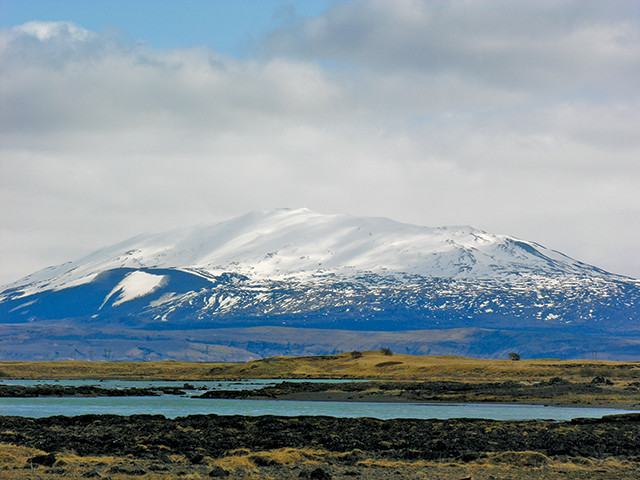
by Mary Caperton Morton Tuesday, March 29, 2016

Hekla Volcano overlooking the Thjórsá River. Credit: Hansueli Krapf, CC BY-SA 3.0.
Hekla is one of Iceland’s most active volcanoes, erupting more than 25 times since its first recorded eruption in 1104. The most recent eruptions in 1970, 1980, 1981, 1991 and 2000 have allowed geoscientists to create a detailed eruption profile for the volcano.
“We understand Hekla’s progression from noneruptive to eruptive quite well, but it erupts with very little warning, usually about a half hour. It has a very short fuse,” says Thor Thordarson, a volcanologist at the University of Iceland. Between eruptions, Hekla is nearly aseismic, with rumblings only starting between 30 and 80 minutes before the eruption. When it does erupt, a 5.5-kilometer-long fissure running along the top of the volcano’s long ridge opens, spewing magma from a reservoir only 4 kilometers below the surface. Some of these eruptions have only lasted a few days, whereas others have continued for as long as six years, with volcanic bombs being thrown up to 20 kilometers from the volcano and ash being carried as far away as Scotland.
“In general, the longer Hekla is dormant between eruptions, the larger the next eruption will be,” Thordarson says. The most recent eruption took place in 2000, leading some geoscientists to believe that Hekla is overdue for another blast.
© 2008-2021. All rights reserved. Any copying, redistribution or retransmission of any of the contents of this service without the expressed written permission of the American Geosciences Institute is expressly prohibited. Click here for all copyright requests.